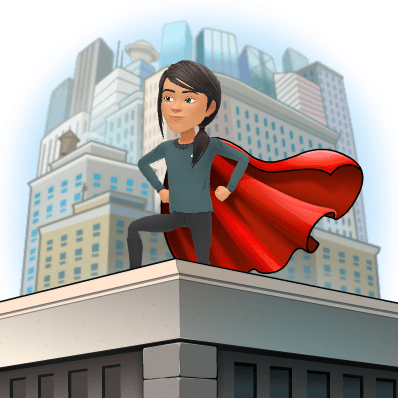Six weeks. That's all that I have left with my seniors. Time is fleeting, and our final days together will be filled with final speeches, prom, and memories they will carry into their post-secondary pursuits. The word of the year has been full - full of activity, full of growth, and full of joy. While I still see students acclimating to the new normal in this endemic phase of COVID, our community seems relatively back to pre-COVID practices. The year feels normal - classrooms are noisy, and students are engaging in typical high school activities in and out of the classroom.
These students are still trying to find balance, executive functioning skills, and adhere to deadlines so lax in uncertain lockdowns and more restrictive times. How do we make the best use of our final few weeks together? What skills must they refine before crossing the football field during graduation? Most importantly, how do I empower them to be literate and effective communicators in any endeavor they pursue?
The fourth quarter is a sprint, so let's start running toward those final goals.
This spring break, I took time to reexamine my learning targets and goals for the final two units of the semester. Using backward planning, I mapped out the time needed to complete their last two assessments and incorporated time to practice to reach mastery. Backward planning is so essential, especially as time is limited. While the day-to-day plan may shift and be revised, the overarching direction of the remainder of the course is needed. With a plan, we will maximize our time together. Plans also allow us to focus, evaluate, and shift approaches as necessary to help students reach the finish line with strength.
Still, there is always time to foster relationships and encourage students to value their connections with their peers, teachers, and school.
Building relationships is one of our most significant investments. While a silly bellringer sometimes feels off track, these moments to bond, collaborate, and share yield some of the most substantial results. When students feel connected to their teachers, peers, and the school environment, they are more successful academically and far more likely to retain what they have learned.
The adage that people won't remember what we said but will remember how we made them feel applies here. My students probably won't remember the exact terminology for Monroe's Motivated Sequence. Still, their connectedness to the course and our time together will give them the confidence to logically and effectively apply persuasive appeals. I hope they can use their voices clearly, concisely, and confidently. I also hope they will remember that most communication is listening and adapting to their audiences. Our relationships matter, and as teachers, we can model the power of relationships in our daily lives with our students. No matter what comes next for them, this interpersonal skill will open doors and make their lives richer every day.
The weather is somewhat unpredictable in the spring in the Chicagoland area, so wear layers -- and plan for the unexpected to occur both in and out of the classroom.
A lesson I share with students on the first and last day of my class is that it's essential to live in the present but plan for the future. We should never wish away time. While we all could look ahead and say, "I can't wait until summer," or "Life will be so much better when ____ part of my life is done." Wishing away time, however, prevents us from appreciating every moment and every phase of life. My seniors often get overwhelmed by wishing away their senior year, but it is important to enjoy the present. Still, planning ahead, applying for scholarships, and taking advantage of opportunities such as internships, career shadowing, and extracurricular experiences can help students develop skills leading to further post-secondary possibilities.
Finally, let's listen to those around us and appreciate the beauty of spring -- and each person.
In the rush of the final quarter, it is easy to keep moving without valuing the people and moments around us. We can all learn so much from each person we encounter. My students this semester are particularly goofy. They bring larger-than-life energy to the classroom every period. They are in an exciting phase of their lives as they make significant decisions about their futures and share their hopes for what is to come.
Our stories are woven together, if even for a moment. May we see the best in each other and blend our current paths to leave a beautiful legacy behind us. The best way to empower others is to help them see the best in themselves, realize what they are capable of, and show how much their stories matter. The next chapter is an exciting one, but it's still unwritten. I hope my students take the skills they gained in high school to make that chapter joyful.






.gif)








.png)
.png)

.jpeg)



